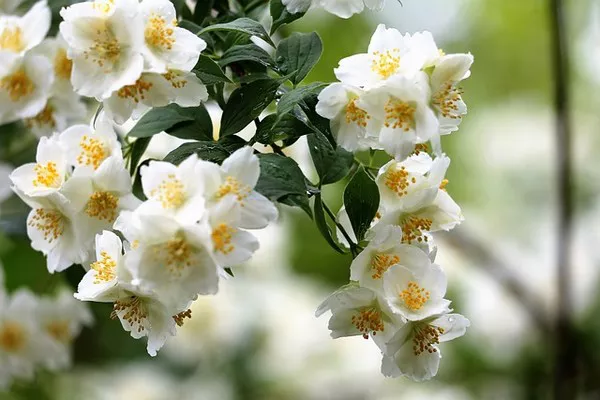In the vast tapestry of nature’s beauty, flowers stand as delicate emissaries, captivating our senses with their vibrant colors and enchanting fragrances. The olfactory allure of flowers has been celebrated across cultures and ages, and the quest for the most fragrant blooms continues to captivate enthusiasts and horticulturists alike. In this comprehensive exploration, we delve into the world of flowers, unraveling the mystery behind their captivating scents and uncovering the top contenders for the title of the most fragrant blossoms.
The Science of Fragrance
Before we embark on our fragrant journey, it is crucial to understand the science behind floral fragrances. Flowers produce scents to attract pollinators, such as bees, butterflies, and birds, ensuring their reproductive success. The aromatic compounds responsible for these captivating scents are often essential oils, which can vary widely in composition and intensity.
The key components that contribute to a flower’s fragrance include terpenes, phenols, and esters. These compounds, in various combinations and concentrations, create the unique and distinctive scents that define each flower. Additionally, environmental factors such as temperature, humidity, and time of day can influence the intensity and character of a flower’s fragrance.
Top Fragrant Flowers
Now, let’s turn our attention to the stars of the fragrant floral world. While opinions on fragrance can be subjective, certain flowers consistently earn acclaim for their captivating scents. Here are some of the most fragrant flowers that have earned a place in the olfactory hall of fame:
Roses (Rosa spp.):
Renowned as the “queen of flowers,” the rose is a timeless symbol of love and beauty. With a diverse array of cultivars, roses offer an extensive range of fragrances, from sweet and fruity to spicy and musky. Varieties such as the Damask rose and the hybrid tea rose ‘Mr. Lincoln’ are particularly celebrated for their intoxicating scents.
Jasmine (Jasminum spp.):
Jasmine, with its small, star-shaped flowers, emits a sweet and heady fragrance that is both exotic and alluring. Commonly used in perfumery, jasmine blossoms are often associated with romance and are a popular choice for gardens and bouquets.
Lilies (Lilium spp.):
Lilies are known for their elegant appearance and diverse fragrances. The oriental lily, in particular, exudes a rich, spicy aroma that can fill a room with its captivating scent. Whether in white, pink, or orange hues, lilies add a touch of sophistication to any garden.
Lavender (Lavandula spp.):
With its soothing aroma and distinctive purple spikes, lavender has become a symbol of relaxation and tranquility. The fragrance of lavender is often associated with fields in the Provence region of France, where vast expanses of these aromatic plants paint the landscape.
Gardenias (Gardenia spp.):
Gardenias are prized for their creamy-white, waxy flowers and their intoxicating fragrance. The scent of gardenias is often described as a blend of jasmine and orange blossom, creating a sensual and luxurious olfactory experience.
Sweet Alyssum (Lobularia maritima):
Despite its modest size, sweet alyssum packs a powerful fragrance, releasing a honey-like scent that attracts pollinators. This low-growing annual is a popular choice for borders and containers, adding both beauty and fragrance to outdoor spaces.
Factors Influencing Fragrance
While the inherent characteristics of each flower contribute to its fragrance, several factors can influence the intensity and quality of the scent. These factors include:
Climate and Soil Conditions:
The environment in which a flower grows plays a significant role in determining the potency of its fragrance. Ideal conditions, including proper sunlight, moisture, and well-draining soil, can enhance the production of essential oils responsible for the scent.
Time of Day:
Floral fragrances often vary throughout the day, with many flowers emitting their most potent scents during the evening or early morning. This adaptation aligns with the activity patterns of nocturnal pollinators such as moths.
Plant Health and Vigor:
Healthy, robust plants are more likely to produce intense and aromatic scents. Adequate nutrition, proper care, and disease prevention contribute to the overall well-being of the plant and its fragrance.
Tips for Cultivating Fragrant Gardens
For those seeking to create a garden that tantalizes the senses, incorporating a variety of fragrant flowers can be a rewarding endeavor. Here are some tips for cultivating a garden brimming with delightful scents:
Diversify Your Selection:
Choose a mix of flowers with different bloom times and complementary fragrances. This ensures a continuous olfactory experience throughout the growing season.
Consider Your Climate:
Select flowers that thrive in your specific climate and growing conditions. A well-adapted plant is more likely to produce robust fragrances.
Strategic Placement:
Plant fragrant flowers in areas where their scents can be enjoyed, such as near windows, seating areas, or pathways. Consider the prevailing wind direction to carry the fragrance effectively.
Companion Planting:
Some flowers complement each other in terms of fragrance and aesthetics. Experiment with companion planting to create harmonious combinations that enhance the overall olfactory experience.
Conclusion
In the enchanting realm of fragrant flowers, the sensory journey is as diverse as the blooms themselves. From the timeless elegance of roses to the exotic allure of jasmine, each flower brings a unique olfactory symphony to the garden. Understanding the science behind floral fragrances and considering factors that influence scent intensity can empower enthusiasts to create gardens that not only dazzle the eyes but also captivate the sense of smell.
As we continue to explore the world of fragrant flowers, let us embrace the beauty and complexity of nature’s perfumed offerings. Whether in a carefully curated garden or a simple vase on a table, the fragrant blooms of nature have the power to transport us to a world of sensory delight, where each petal tells a story of beauty, romance, and the timeless allure of floral fragrance.


